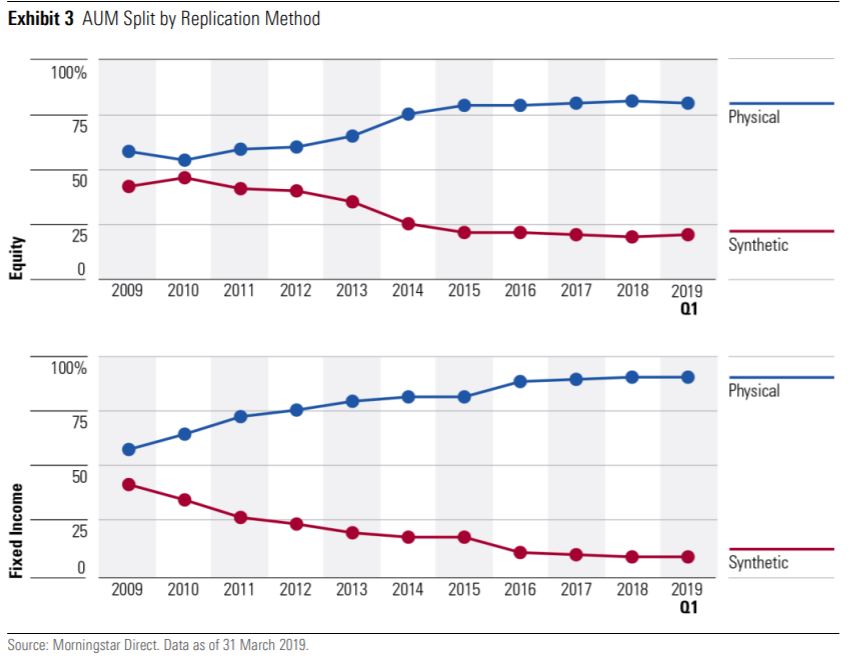Synthetic ETFs still have a role to play in the European ETF ecosystem despite being tainted with "negative connotations", according to Morningstar.
The report, entitled A Guided Tour of the European ETF Marketplace, highlighted a number of asset classes where synthetic replication has had a significant performance edge versus physical ETFs such as mainstream US equity exposure.
Synthetic ETFs tracking indices such as the S&P 500 and MSCI USA, the report said, avoid the payment of withholding tax on dividends and they get paid the exact returns of the index minus fees while the performance of physically replicated ETFs can fluctuate due to factors such as tracking error.
Synthetic ETFs have rebounded in popularity this year. According to data from Lyxor, synthetically-backed US equity ETFs have posted €730m inflows into European listed products so far this year, as at 1 April, versus €1.49bn outflows for physical US equity ETFs.
First brought to the European market in 2001, synthetic ETFs use derivatives such as swaps and futures contracts to track the underlying index with providers entering a deal with a counterparty that ensures returns will match the benchmark.
The trend away from synthetic ETFs has been clear since the Global Financial Crisis. From a broad 40/60 split, they currently account for 20% of equity ETF assets and 90% of fixed income. The turning point came in 2011 after the IMF and Financial Stability Board issued warnings on swap risk in the aftermath of 2008.
ETF providers like Xtrackers, Lyxor and Amundi were forced to re-think their strategies as they had large amounts of synthetic ETFs in their range, transitioning to a hybrid model.
Jose Garcia-Zarate (pictured), associate director, passive strategies research at Morningstar, and co-author of the report, commented: “For many years, synthetic replication has carried negative connotations, with concerns expressed about the complexity of the structure and swap counterparty risk. These are valid arguments, but many investors are comfortable with the synthetic structure.
“They value its more consistent tracking – as measured by tracking error – and in the case of certain market exposures its superior benchmark-relative return relative to the physical model.”
In the same report, Morningstar predicted ETF assets domiciled in Europe to hit €2trn by 2024.




